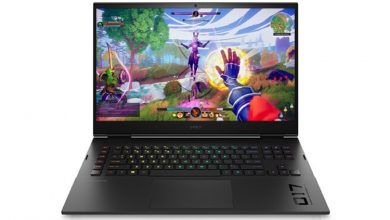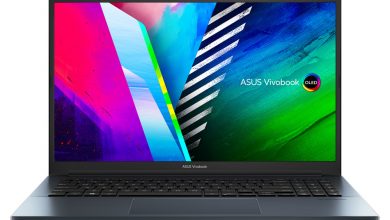In the market, the OLED-equipped laptop segment is quite extended. With different OLED types, the laptops can now achieve the experience of sharp colors with accuracy on display. However, the question is whether your laptop needs an OLED Screen or not.
Here we have discussed some advantages and disadvantages of having an OLED Screen in a notebook, and based on them, we will conclude whether a laptop needs an OLED screen or not.
Advantages of OLED Screen
In terms of advantages, there are very few of them regarding OLED screens in a notebook.
No doubt, the OLED Screen is far better than the LCD Screen (commonly used in notebooks) when it comes to the Color Gamut and Accuracy Range. In general, its sRGB Color Gamut crosses 100%; average color accuracy ΔE is also usually one, and the level of color deviation is shallow. Not only that, but OLED Screen also supports high brightness levels in addition to HDR. Moreover, the OLED Screen mechanism also emits light so that its response rate also becomes fast.
Disadvantages of OLED Screen
Due to some characteristics of OLED, we must admit that this screen type isn’t the perfect one. It uses a pretty polarized screen technology that would perform fine in a typical environment but extremely poor in challenging conditions.
At first, we have the screen burn-in issue, the most common problem in OLED screens. Even with the latest Samsung E4 Material, the problem still happens but not severely. The OLED Screen Pixel’s life has a limit, judged by its physical characteristics, and cannot be changed. Advances in technology can only help extend the life of displays, but they still can’t reduce this annoying factor of OLEDs. So, it doesn’t matter whether it has better picture quality; the screen’s life is still finite.
Then another common problem with OLED screens is that it causes eye strain. As we know, the OLED Screen comes with higher brightness and a wider color gamut, so the display would be great. But, at the same time, if the color information amount in a display is larger, then using it for a long time can cause your eyes to feel fatigued, leading to a headache. If you are a sensitive user, you might feel dizziness and soreness in your eyes after watching it for a long time.
Third, we have another major problem with the OLED screen: its higher power consumption. The OLED screen compromises the notebook’s battery life by providing high image quality.
It is also worth noting that color management is itself a problem in Windows OS; if the manufacturer doesn’t do anything by itself, it can easily lead to color aberration.
Physical Discomfort is Main Issue
Even though the OLED Displays have the issues mentioned above, they can still be solved. For example, if the OLED displays have a burn-in problem. To avoid this issue, ASUS (a well-known laptop manufacturing brand) introduced a program in its OLED-equipped notebooks through which the display will be forced to enter dynamic picture mode. The main reason for OLED Screen Burn-in is displaying the same (still) picture for a long time, such as the taskbar at the bottom of Windows, which has almost no motions. Opening a static web page for a long time is another example that can cause the screen burn-in.
Another mentioned issue is the battery life which is again easy to handle. Reducing the brightness at specific points (of usage) or using common energy-saving options during daily usage can help in obtaining an extended battery time for a notebook.
Even though Windows’ color management is complicated to solve, the problem with it is something that happens rarely, so there is no need to get too worried regarding this issue.
Of course, the screen burn-in can be alleviated by technical means. However, if the screen is being used carefully and correctly, there is a low probability of screen burn-in issues in a notebook’s expected life cycle.
All the issues we have discussed regarding OLED displays have a specific solution in a certain way. However, the most deadly fact about this kind of display is that it can easily cause physical discomfort for a user. With the trend of OLED Displays in the notebook segment, many consumers have reported this problem. The physical discomfort includes eye discomfort, headache, tiredness in the eyes, and many other issues in long-term usage. Undoubtedly, this is the biggest problem in OLED Displays.
In modern office scenarios, the laptop is one of the primary tools used in productivity and office work. An office worker spends the majority of their time watching the screen. And if the person uses the OLED screen-equipped notebook, they might face visual fatigue in this kind of usage. Visual fatigue can cause physiological problems such as eye pain and headaches. Moreover, this problem has no solution at all. The user can avoid this issue only by reducing the usage time. The bright and saturated picture of OLED transmits a large amount of color information to the user’s brain, which causes more sensory stimulation to the brain.
Whether laptops need OLED screens or Not?
Back to our main query regarding whether the OLED Screens must be used in a notebook or not. In our opinion, using an OLED Display in a notebook is completely unnecessary. Following are some reasons which make our opinion more valid.
There is no doubt that an OLED display will bring you a better picture experience, but at the same time, it can quickly tire the user and seriously affect the working state.
The most significant advantage of OLED screens is HDR support. However, in the case of notebooks, the HDR is useless as most video players, streaming websites, and related programs don’t support HDR. The laptop’s display supports higher resolution (4K) but no HDR support.
These days, the price of OLED-equipped notebooks is relatively higher; that’s why we recommend you to experience it before buying, through which you would be able to know whether your eyes and brain can bear the pressure of an OLED display or not. Using an OLED screen is probably the same as the case of using VR devices; some people are okay with it for hours, but some might not be able to last a few minutes.
However, the biggest difference between a laptop and a VR is that the laptop will be used frequently. Especially in office usage, the least time spent watching the screen is at least 6 hours/day, and receiving this large amount of color information will definitely increase fatigue.





